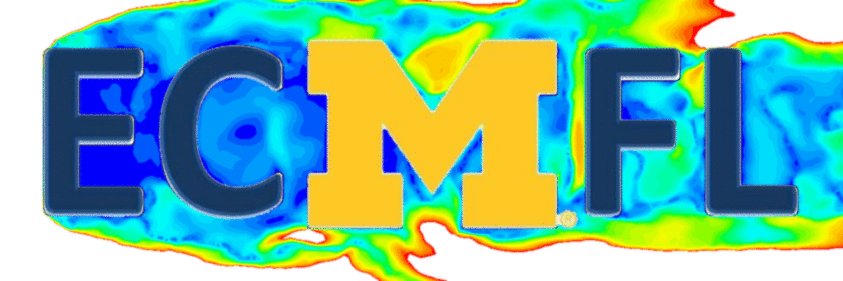Research projects and activities
Gamma tomography system for high resolution void-fraction measurements in fuel bundles
High-resolution measurements of void-fraction distributions at high pressure conditions and/or in complex geometry such as fuel are particularly challenging. Within this project we are designing and building a gamma-tomography system for non-intrusive measurements of void-fraction distributions in high pressure fuel bundle mock-ups. The maximum test section size we can currently accomodate is about 450 mm in diameter. The system consists of a 15 Ci Gamma source with gamma lines at 315 and 468 keV and an arc of 300 LYSO detectors. The source has a size of about 1mm, allowing for high spatial resolution. The detector arc is built in modules of 8 detectors. The detector modules have Wi-Fi capabilities, so that the detector arc can be easily expanded (or reduced depending on the size of the object to be imaged). The detector holder is manufactured using 3D-printing technology. Both source and detector arc are mounted on a rotating table, which is placed around the object (eg fuel bundle) to be imaged. Tomographic reconstruction algorithms such as filtered-back projection and algebraic reconstruction techniques are used.
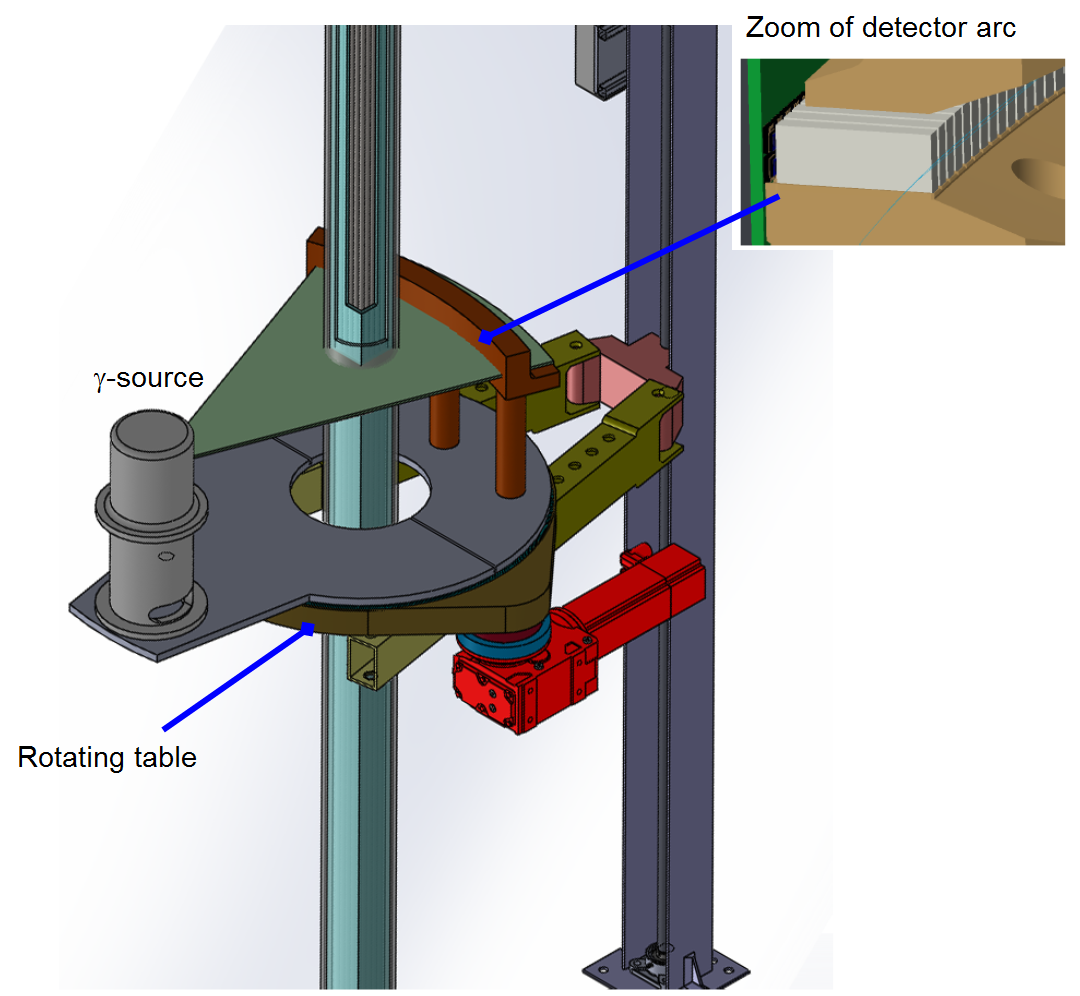
back to top
High fidelity simulation of CRUD deposition on PWR fuel rods - DOE/CASL
The operational issues that arise due to CRUD (Chalk River Unidentified Deposit) build-up on PWR fuel pins include CRUD induced power shift and CRUD induced localized corrosion, known as CIPS and CILC, respectively. These phenomena lead to reduced operating margin and compromised fuel rods. In collaboration with Los Alamos National Laboratory (Dr. Brian Kendrick) and Prof. Downar's group at UM, we have developed a two-way coupling between the neutron transport code DeCART, the CFD code STAR-CCM+ and the CRUD chemistry code MAMBA. With this novel high fidelity coupled tool we are able to reproduce the classic "striped" CRUD pattern observed on fuel rods in operating reactors.
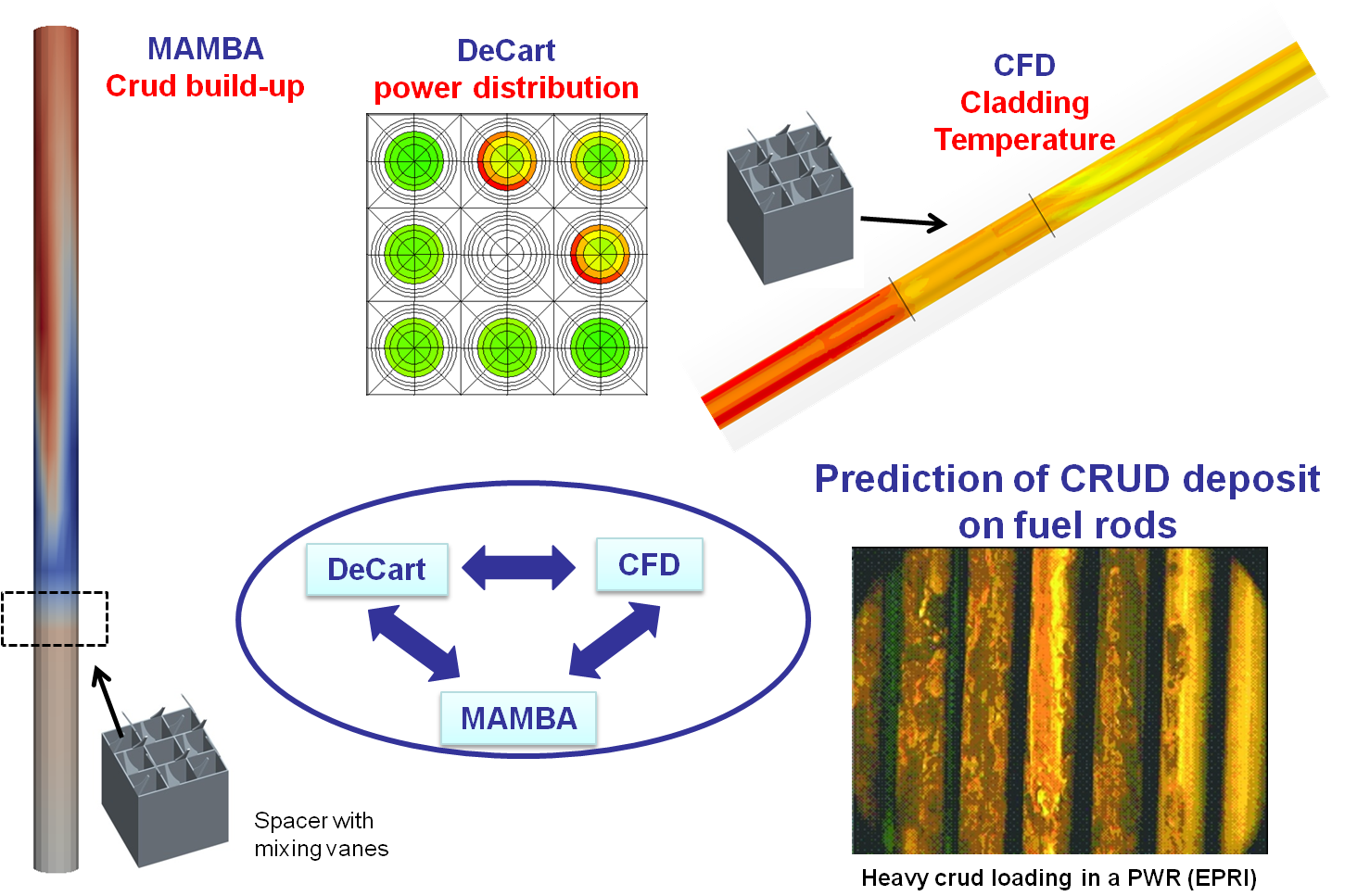
back to top
Thermal fatigue in T-junctions and branch lines of nuclear power plants
Thermal fatigue induced by thermal striping occurring in the branch lines of the PWRs primary system has been recognized to be an important aspect for the aging and life-time management of nuclear reactors. In previous research efforts, it has been found that flow swirls generated by the coolant turbulent motion can penetrate dead-ended branch lines of the primary circuit, yielding local high amplitude temperature fluctuations (above 250 K) that can lead to pipe cracking.
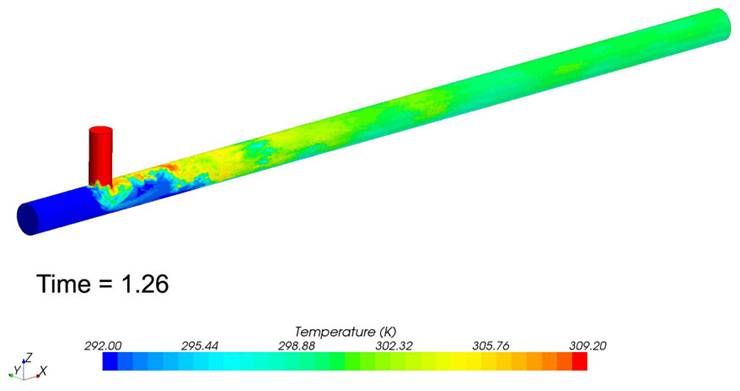
back to top
Design of a novel 1000 MWe Inherently Safe PWR - DOE/IRP
Within this project we are developing a novel concept of a 1000 MWe LWR with inherent safety features. The new reactor is referred to as the Integral Inherently Safe Light Water Reactor, or I2S-LWR. The inherent safety features will advance its safety level beyond that of advanced passive Gen-III+ LWRs. The I2S-LWR design will incorporate lessons learned from the recent events induced by the natural disaster in Japan. At the same time, economic competitiveness will be maintained and other Gen-IV requirements will be considered and accommodated to the extent possible. The novel concept is based on an integral primary system configuration, and increased level of passivity of safety systems. This project is a collaborative effort lead by the Georgia Institute of Technology. Our group is responsible for the design of thermal-hydraulic systems and passive safety systems, as well as the safety analyses. The design is carried out in collaboration with Westinghouse. 1D thermal-hydraulic codes such as TRACE and RELAP5, and the CFD code STAR-CCM+ will be used to aid the design and perform the safety analyses.
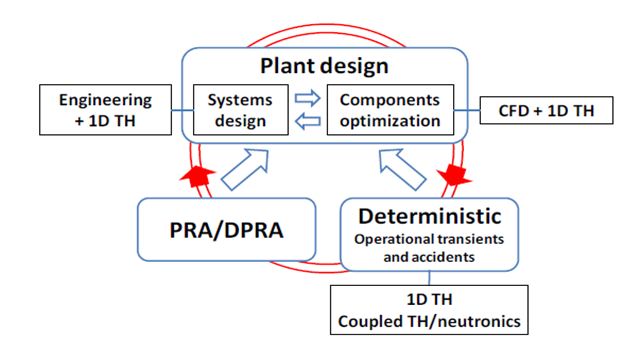
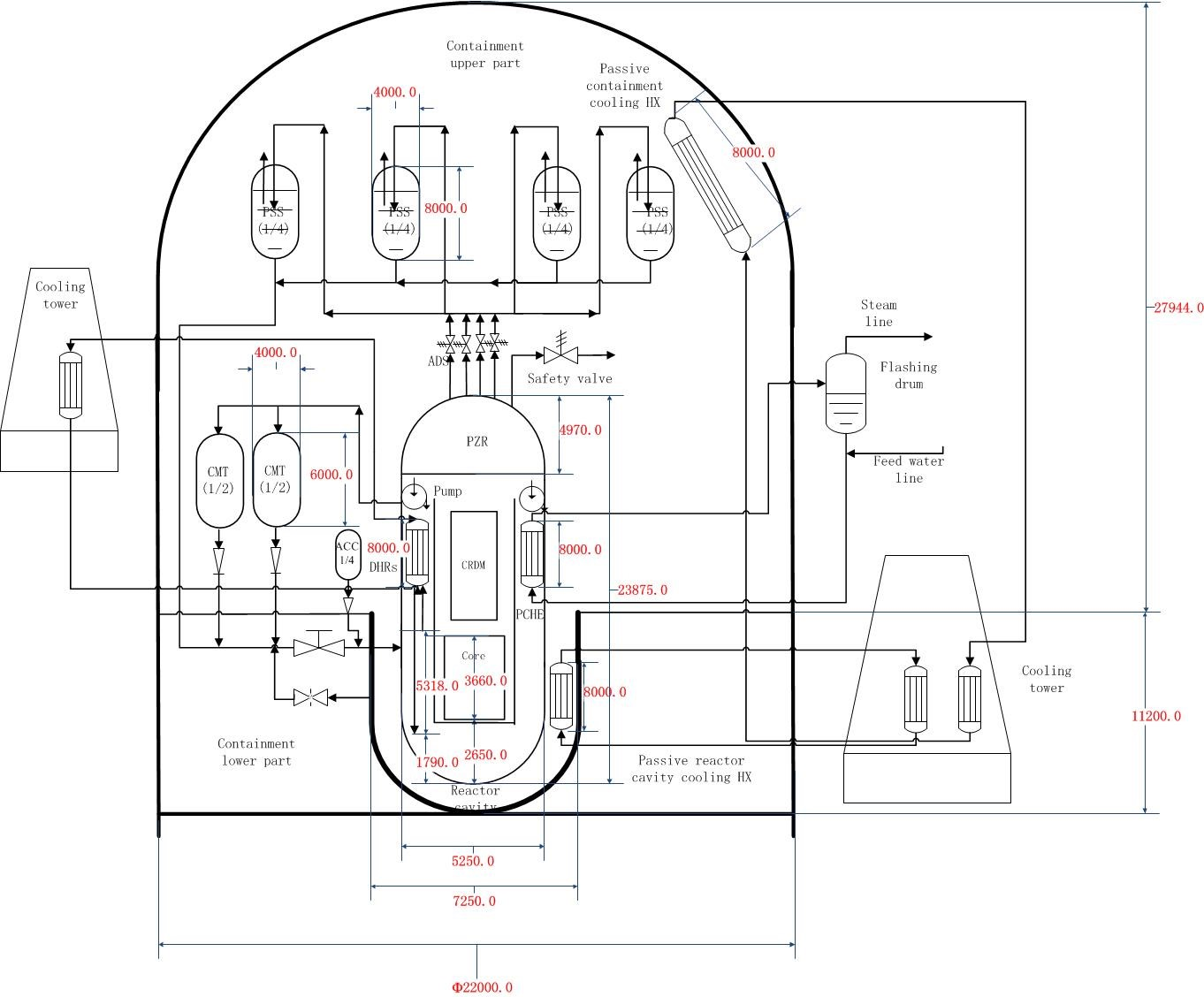
back to top
Coupling 1D Thermal-hydraulic codes with Computational Fluid Dynamics for the analyses of Nuclear Power Plants transients - US NRC
The direct coupling of CFD and 1D system codes has become an attractive possibility for a wider range of important reactor applications. In this project we are developing a coupling scheme between the US NRC best-estimate thermal-hydraulic code TRACE and the CFD code STAR-CCM+. We aim at improving the accuracy and efficiency of nuclear power plants simulations and provide the ability to isolate the regulatory importance of specific 3-D phenomena such as stratification, mixing and natural convection.
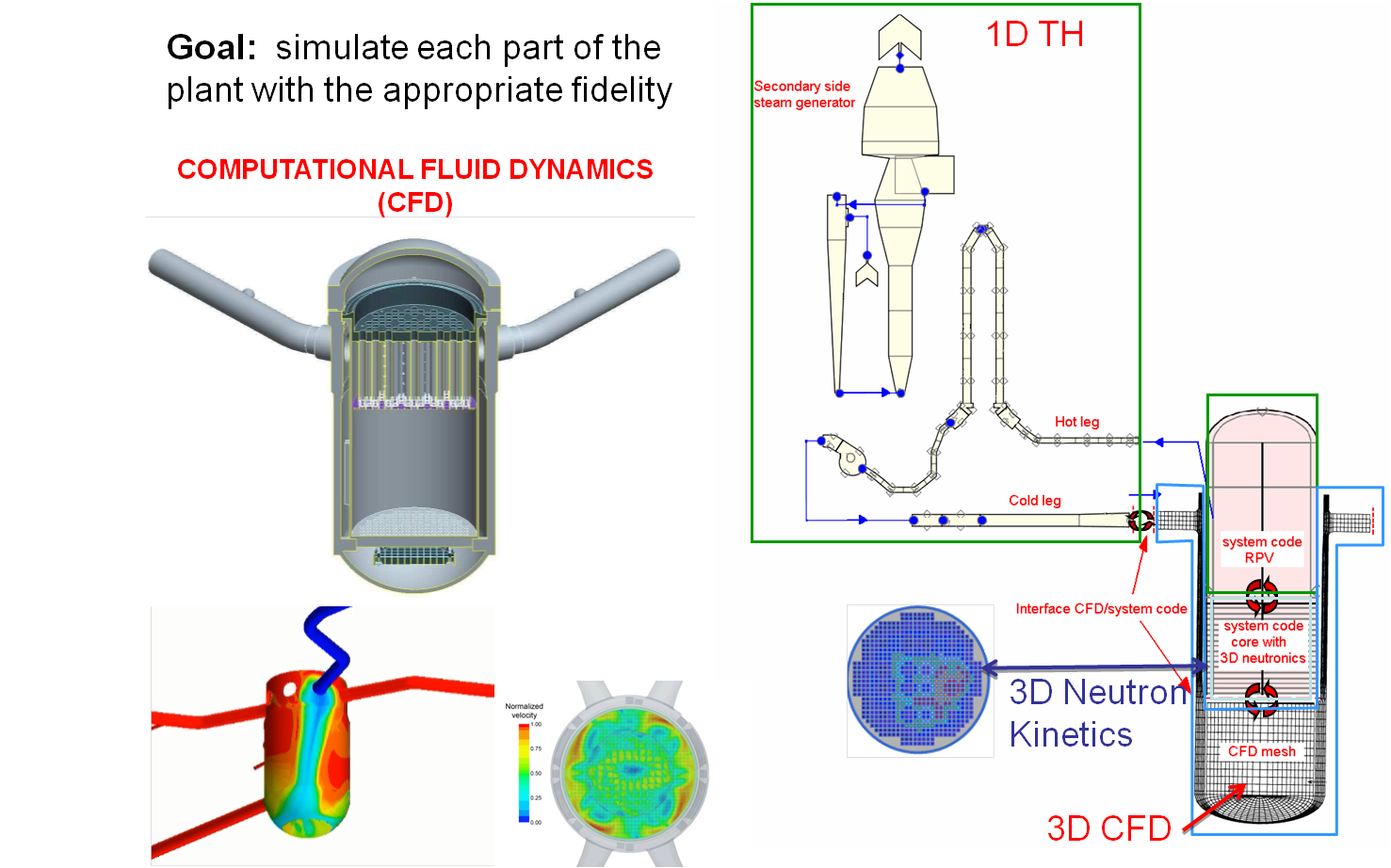
back to top

